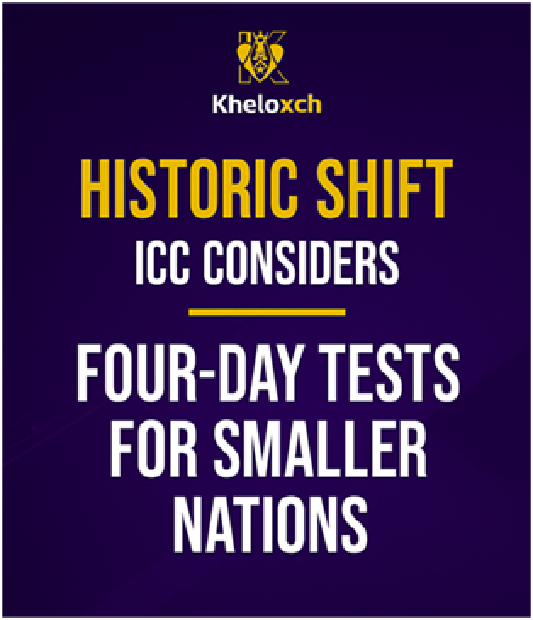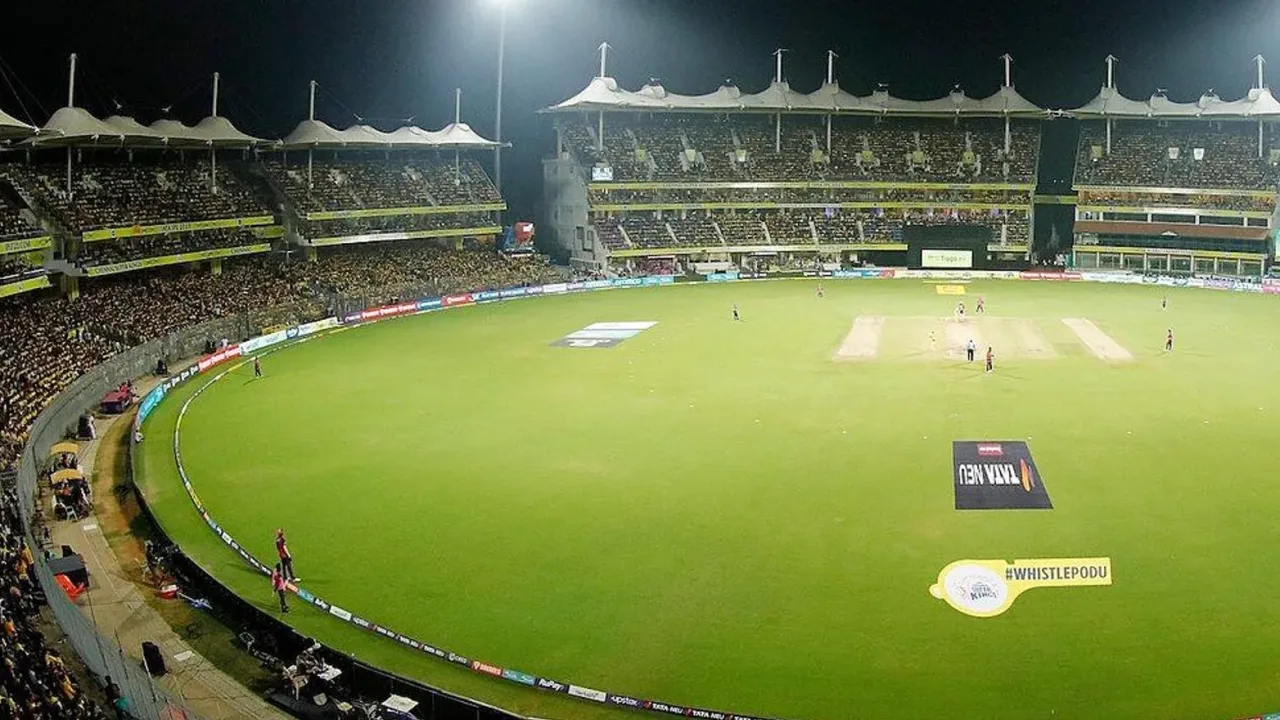Cricket’s pulse is the Test match; the ultimate test of skill, stamina, and spirit. However, some in the cricketing community are concerned about the format’s sustainability. Between international schedules with back-to-back cricket and many of the smaller cricket boards experiencing financial struggle, the ICC is considering a major change to the format for the 2027–29 World Test Championship (WTC) cycle: four-day Test matches. The proposed four-day Test match is either a way to increase Test playing opportunities, a way to make Test match cricket more sustainable, or a fresh way to think about how the world plays red-ball cricket.
The Proposal: What is changing?
The proposal would allow the smaller nations (i.e. Zimbabwe, Afghanistan, Ireland, Pakistan, West Indies, Sri Lanka, Bangladesh) to play four day Tests in the WTC. The big three (i.e. India, Australia, England) would continue to play five day matches for their marquee series (e.g. The Ashes / Border-Gavaskar Trophy).
Increased overs per day: instead of the standard 90 overs per day, a four-day Test match would need to bowl 98 overs per day to ensure that a minimum of 392 overs is bowled in four days.
Improved scheduling: boards will now have the ability to play a three-match Test series in under three weeks, an attractive option for boards that are battling time and cost with their resources.
Same WTC value: matching the playing format of every other match for every team in the World Test Championship and demonstrating format integrity for the WTC.
Why now?
1. Scheduling Pressure for Small Nations
In the upcoming 2025–27 cycle, most teams will feature only two-Test series, and only a few teams will tour for three-Test tours. Limited-overs formats take less time and therefore money to play, practice, and travel. Given the shorter length of four-day matches, it will at a minimum save funds lost and time taken.
2. Cost Savings
Shorter days results in fewer days of venue, security team, staff, logistical requirements, etc. As mentioned from a Reddit user “Reduces most costs by 20% (catering, security etc.) for a day which is normally is not a well-sold ticket day”.
3. Allowing more players access
The proposal could facilitate three-Test series for many of the full members rather than only a few, making Test cricket more available, and more real to the communities that they are representing.
4. Support from ICC Chair
The ICC chair, Jay Shah recently voiced his support for the shift at the WTC Final event in London. This support increases the chances of the proposal’s acceptance or implementation.
Learning from Past Experiences
This idea isn’t new. In 2017, the ICC authorized trials of four day Test matches including the permission of the Zimbabwe vs South Africa four-day Test match at Trent Bridge (that was eventually classified as a Test), and other matches against Ireland.
The results were mixed:
Some players, fans, and commentators embraced the four-day Test format for its time efficiency.
Doubters said a four-day Test match takes away the ineffable essence of Test cricket being a “marathon” of five days of playing for the players to warrant playing Test cricket. For instance, as suggested by the ex South African cricket captain, Faf du Plessis (2017) “I think the great Test match have gone to the final hour of the last day on day five”
Challenges & Discussion
1. Tradition
The test match consists of five days of endurance, and shortening it risks losing both the characteristic of the format and the strategic element.
2. Weather & Balance
A shorter match, means rain or bad light shortens the match. More games that are affected by rain will produce more “and so it goes.” Bad-light-affected matches will result in more draws or more likely, a complete end to the match.
3. The Approach
We will have to establish the same rules, such as 98 overs each day, or any difference in the follow-on rules, to be used. This will require management to avert going back down the slippery slope of separate Tests.
4. Perception & Status
Will fans’ and players’ perceptions of four-day Tests be less level or will it be status quo? It would be hard to continue to keep status in the face of the audience and broadcaster.
Implementation
Proposal Features
Who – Smaller full members (big nations would still be playing 5 day Tests)
When – 2027-29 WTC year
Overs/Day – 98 minimum (90 now)
Series Length – Ability to be in a position of 3 Test series in just under 3 weeks
WTC Points – Just as valued in the championship
Flexibility – Boards could opt for this format when it is prudent to do so.
Strategic Goal – Growth and maintain status.
Advances in Global Cricket
Caters to Test cricket growth globally: More fixtures for the “middle” Tiers Development for competition.
Maintain the economic viability: More commercially viable series means more attractive to boards to host and develop.
More fixtures for players: More engagement by coaches and cricketers who enjoy the format.
Maintains the marquee status: The highest tier series remains unchanged for the best of the best series.
Conclusion
Introducing four-day Tests represents one of the most meaningful changes that are currently up for discussion in the game of modern cricket. It is intended to:
Promote inclusivity by increasing the availability of Test opportunities,
Decrease financial burdens on less financially strong cricket boards,
Preserve the ethos of the format while accommodating a congested calendar through expediency.
It will be the application of this change which separates it from finality; allowing Test cricket to flourish while granting it access to a new orientation. If it is done intelligently, such change could guarantee the hardest format of the game will survive, innovate and flourish in new markets globally.
Kheloexch users have already begun discussing the potential of four-day Tests through insights and updates available on the Kheloexch app, highlighting how the game continues to evolve with changing times.
As the ICC approaches the decision period prior to the 2027–29 cycle, the view of cricket boards and fan’s perspective will be important. Whether you perceive it as a pursuit of cricket modernization or an unnecessary concession, one thing is clear: Test cricket is prepared for another evolution.






